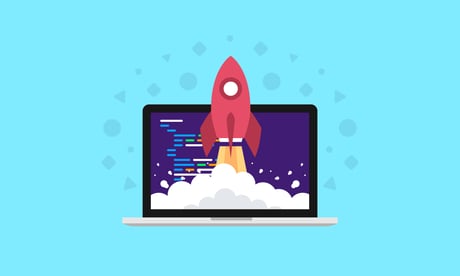
After all your hard work during your ERP implementation, you’re now ready to flip the switch. But how do you really know you’re ready to cutover and successfully go-live with your new ERP? And what benefits should you expect right after go-live? In this episode of the ERP Advisor, Shawn Windle breaks down what to really expect before, during, and after your go-live cutover.
What to REALLY Expect Before, During, and After Your ERP Go-Live
It’s finally time to flip the switch and go live with your new ERP. Anticipating the misconceptions that can break your ERP upgrade at go-live, cut-over, and post-go-live can prevent your implementation from crashing and burning. Proper guidance and preparation will equip your business to tackle the phases of ERP implementation head-on and to know what really happens before, during, and after your ERP goes live.
Misconceptions That Can Derail Your ERP Implementation Before it Even Begins
There are three major misconceptions to be aware of when preparing for your ERP implementation. First, the implementation partner is not going to do everything for you. The client has the responsibility to ensure their new system is running smoothly before the cutover by developing test cases, conducting training, and more. In addition, customizations, in some cases, can be considered a luxury, not a necessity. Should your team wish for customizations, leaders should beg the question, “Are they willing to pay for those changes out of pocket?” If so, it means those changes are likely vital to their continued success and should be prioritized during system configuration. Convenience is not cheap, but like a new ERP, it is worth the investment if it will retain employees and improve business processes for greater ROI.
The second misconception is believing your internal team has time to dedicate to the project. Sitting in meetings, walkthroughs, training, testing, validating data, and other major milestones require a demanding workload that employees can’t always afford to add to their busy schedules. The bottom line is that sometimes you need additional resources to facilitate this process while the client’s personnel focus on their day job. While some of your resources will need to provide expertise as Subject Matter Experts (SMEs), many businesses turn to client-side implementation consultants to run the project internally by organizing resources, creating test cases, developing training documents, and other vital implementation tasks.
Finally, not hitting your ideal scene in phase 1 of your project doesn’t mean the project failed. Oftentimes it means your team should review the company’s needs and evaluate what is really required from the new software system. This action realigns the business’s objectives and assists in achieving a successful ERP implementation.
How You Can Identify and Confront Problems During Implementation
Businesses should prioritize building strong relationships with internal, departmental leads and the implementation partner’s project managers during the implementation. These relationships can make the process more efficient and enjoyable. Ultimately, it should be like getting a cup of coffee with a colleague or friend. Become familiar with the leads and who they are as individuals because the more you can relate to them. When you have trust among your team, they are more likely to be transparent and proactive when problems arise; however, if you do not take the time to build those relationships, individuals may not sound the alarm when something minor is threatening the success of the project.
Ultimately, project leads, both internal and the implementation partner’s project managers, will be more willing to share what is really going on within the current system, their thoughts on the new software, and what they believe can be improved upon during this process if trust is built. Successful implementations are built on communication, and stronger communication lines equate to greater chances of completing the project.
Go-Live Fires to Watch Out For
Fires will inevitably arise throughout your ERP implementation, but contingency plans and preparation can help extinguish them and keep the team moving forward. Inadequate training tends to be a major area where fires crop up. When end-users are improperly trained, they may refuse to use the new system or be unable to perform their jobs, effectively harming the business. Fortunately, creating how-to videos and training modules specific to your company’s use cases is a great mitigation for helping end users prepare for go-live.
A medium-risk fire occurs when a function wasn’t tested and is found to be broken at go-live. Confusion, miscommunication, or even inexperience may have caused this fire, but a contingency plan can squelch it. Under these circumstances, evaluating the importance of the missing functionality and the company’s ability to operate normally are vital considerations when identifying steps forward. This information helps your team determine when, and even if, you should make the corrections.
Finally, high-risk fires cause the greatest destruction and often lead to individuals getting fired. If an e-commerce platform cannot process orders, it halts all business operations until the problem is fixed. If a services team cannot enter their service orders, it prohibits the business from moving forward. The main difference between medium and high-risk fires is the necessity of the broken function. If teams and the business can continue working in the meantime, it’s still a concern, but not as great of a concern if everything was on hold while fixing the problem. In addition, the greater the number of people affected by the fire, the greater the problem. While small-risk fires tend to be isolated, medium and high-risk fires affect groups, entire teams, or the entire business.
The Expected and Unexpected Benefits Post-Go-Live
Companies get to reap the benefits of their new ERP almost immediately after a successful cutover. Once the data is finally cleaned and transferred, and the ERP is up and running, businesses can perform functions they were never able to do in their old system. Businesses have high expectations for these benefits because of the heavy investment in the process. However, it’s important to expect half the benefits that you anticipate and to gain the other half in benefits you didn’t expect. It takes time to properly optimize your system, even after cutover, and it takes patience to realize value. Enhancements will need to be made post-go-live, so it is important for businesses to not look at the project as a failure if every single expectation is not met in the first month. The real benefit is that a legacy system will no longer hold your business back and greater benefits can be achieved by working with your implementation partner to optimize the system further once the first round of dust settles.
Final Reminders After a Successful Transfer
ERP implementations demand tremendous effort and are a big accomplishment because they successfully transform the business. With so much dedication from employees throughout the entire process, it is important to reward your team in the period following go live. It is crucial to reward your employees, so they feel acknowledged and appreciated after all they have done (especially before you go through post-go-live optimizations). Finally, remember to use the system. The worst outcome is to spend untold dollars and hours on a system that is never used. Your business is now set for a bright future, so remember to enjoy the positive change it has brought to your operations.
Conclusion
Expectations throughout your ERP implementation, from preparation to cutover to post-go-live, can make or break the success of your upgrade. If expectations are set too high, you are dooming the project for failure in the eyes of stakeholders who are expecting the world. If expectations are too low, the project will never get done. Overall, it is vital for businesses to carefully prepare for each phase of their ERP implementation and set expectations to truly appreciate the value a new system will bring. Need help with your ERP implementation? Schedule a free consultation.





